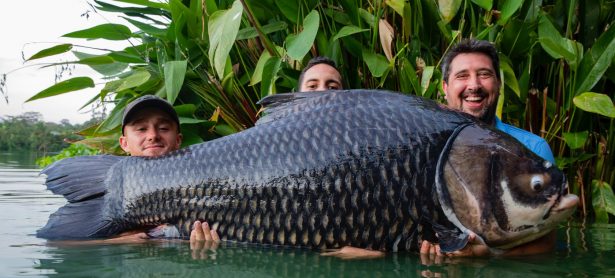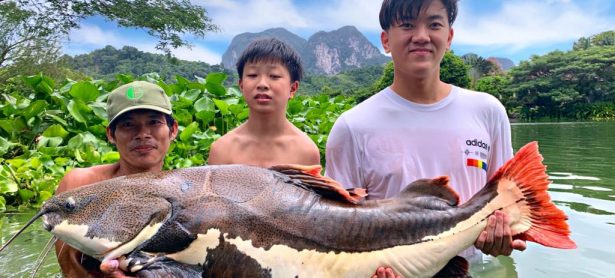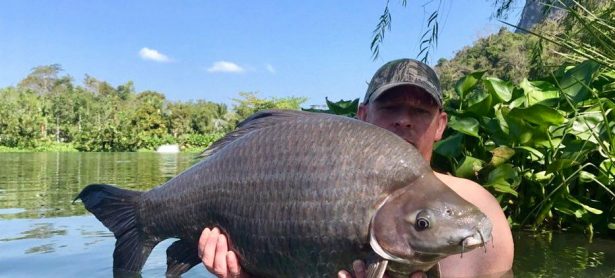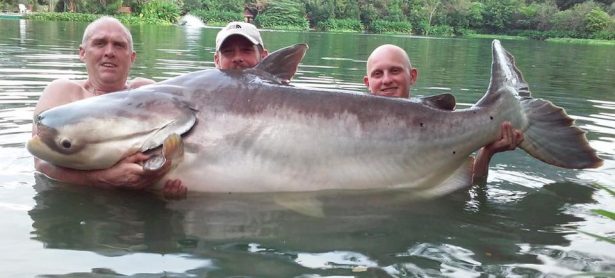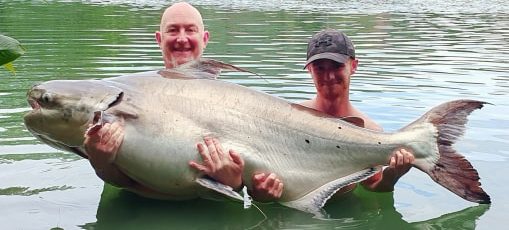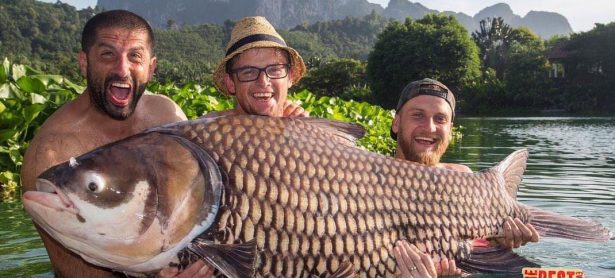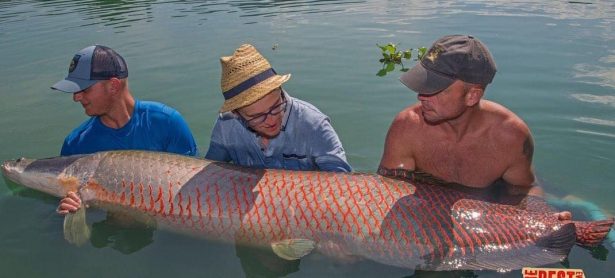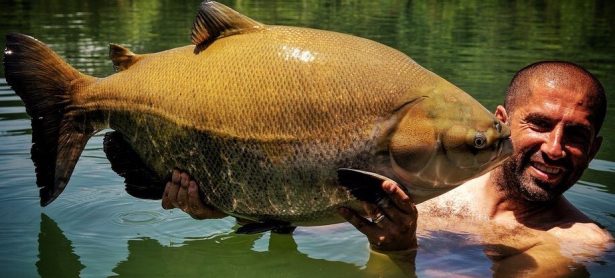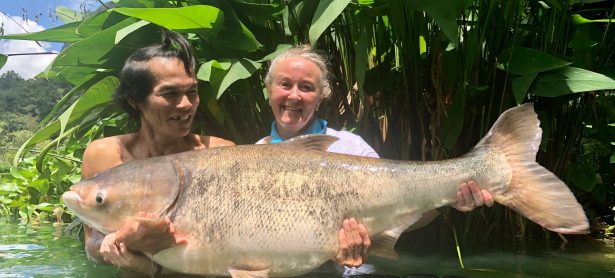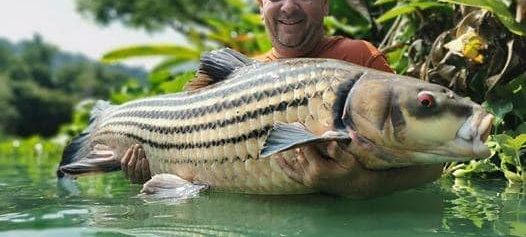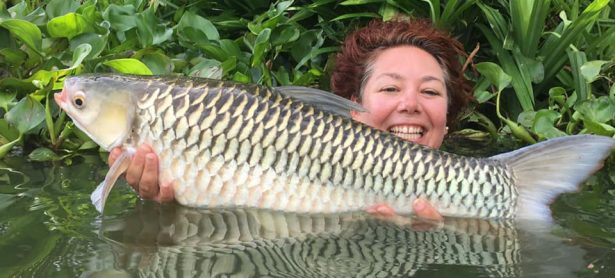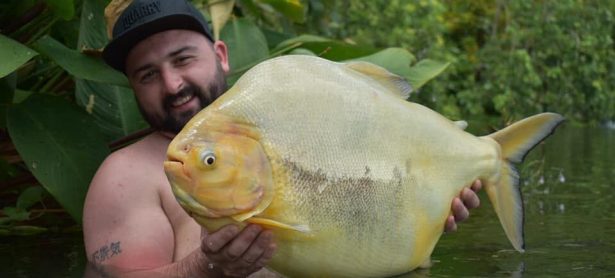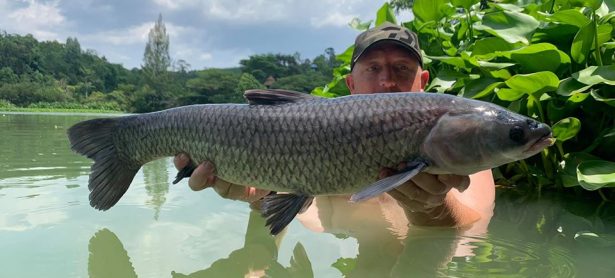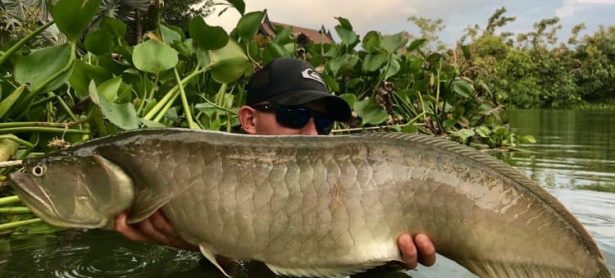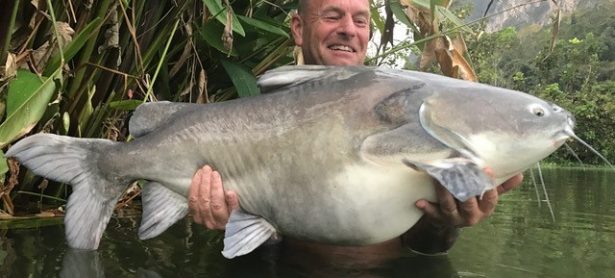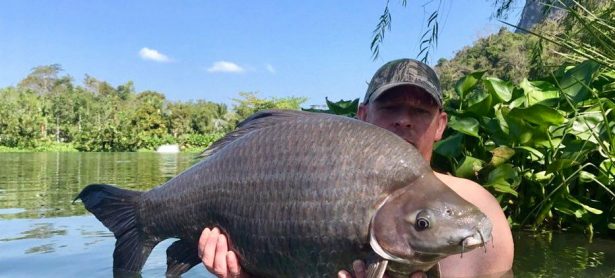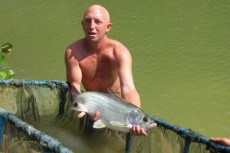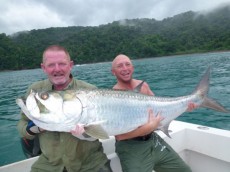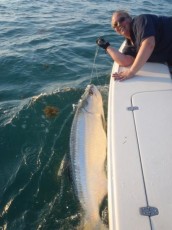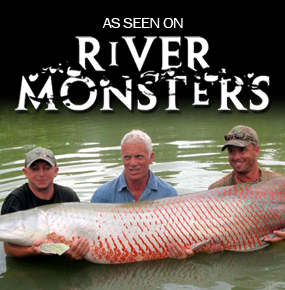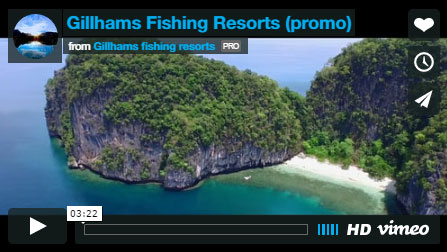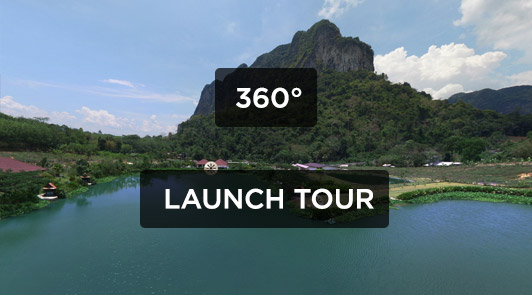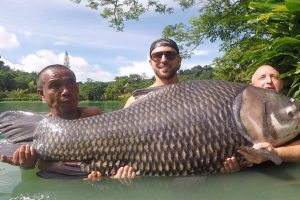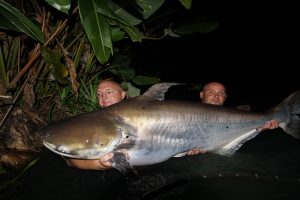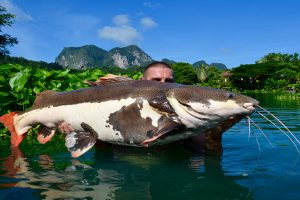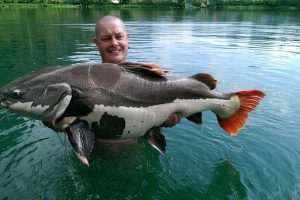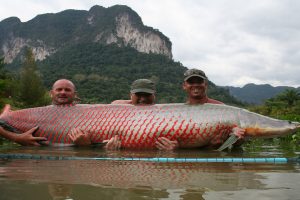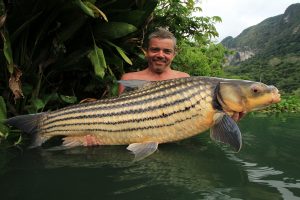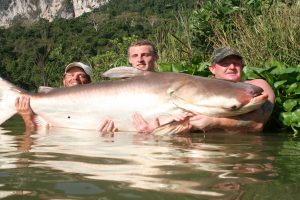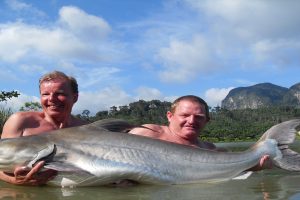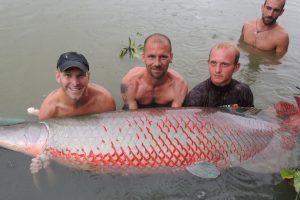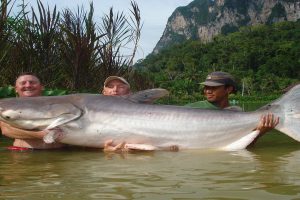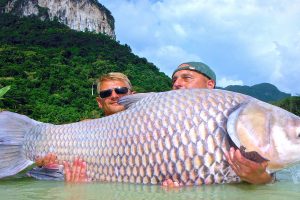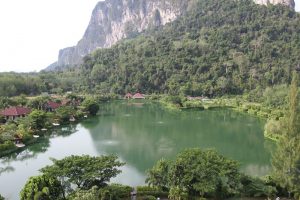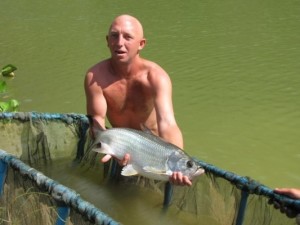 Name: Tarpon.
Name: Tarpon.
Species: Megalops atlanticus.
Thai name: Pla tarpon Atlantic.
Max length: 2.8m.
Max weight: 180kg.
IGFA record: 130kg (286lb 9oz).
Diet: fish, shrimp, crabs, frogs and insects.
The tarpon is a new species to Gillhams only introduced in February 2010, and as such we cannot really give an accurate idea of how to target them. Up to October 2010 just two have been hooked and lost, one falling to float fished dead sea fish set two feet below a small pike float, the other to a fly angler using a green and yellow deceiver. On both occasions the fish where lost when jumping – tarpon anglers worldwide have a saying when a tarpon leaps; bow to the king! As they launch themselves skywards you must lower your rod to ease the pressure on the fish, or it is all over with this bone-tongued silver predator.
We have had tarpon feeding from our hands when tossing them small sea dead fish; they are a shoal fish and easy to spot as they porpoise around the lake. To fish for them set up a rod with a small pike float set at around one meter, walk around until you see them and cast to them. We have fished for them in Costa Rica, and Nicaragua using the above method with circle hooks and sardines with great success. They are also a great sporting fish that readily take a fly, so try using any known tarpon fly patterns or deceivers on a floating line and sight cast to them. Due to other species in the lake no outfit lighter than a 10wt will be allowed if using medium sized flies, and should you choose to fish a large fly, change up to a 12wt outfit in case of accidental arapaima hook-ups. The tarpon is another fish that does not handle well in our hot climate, so have your camera ready for a quick shot. When releasing these fish support them in the water until they can support themselves and swim off.
General facts on the tarpon:
Tarpon are not indigenous to Thailand; they have huge range from the Eastern Atlantic – Senegal to Angola, with exceptional occurrences in Portugal, Azores and Atlantic coast of southern France, Western Atlantic – North Carolina, USA to Bahia, Brazil, with occasional occurrences off the American coast northward to Nova Scotia, Canada and southward to Cananéia, Brazil and Argentina, throughout Gulf of Mexico and Caribbean, and Eastern Central Pacific – Cobia Island in Panama via the Panama Canal. They are classed as freshwater, brackish and marine fish that inhabit coastal waters, bays, estuaries, mangrove-lined lagoons, and rivers. They are often found in river mouths and bays, and they enter fresh water in large schools, frequenting particular spots for years, feeding on fish like sardines, anchovies and crabs. Their swim bladder, which is attached to the esophagus, can be filled directly with air and allows the fish to live in oxygen-poor waters. They have a high fecundity; a 203cm female is estimated to produce over 12 million eggs.
Tarpon can spawn in water that is temporarily isolated from the open sea. When their eggs hatch the transparent fry migrate into estuaries, and it is at this stage when they can be taken and slowly converted to live in fresh water. Tarpon are famous for their spectacular leaps when hooked, making them a highly regarded sport fish. They have a commercial value for their meat, which although very bony is marketed fresh or salted. The large scales of a tarpon are used in ornamental work and in preparation of artificial pearls; they used to be cultured commercially in Colombia for their scales, and they are becoming a very popular aquarium fish in Asia. Our tarpon were purchased from a private collector when they outgrew his aquarium.



